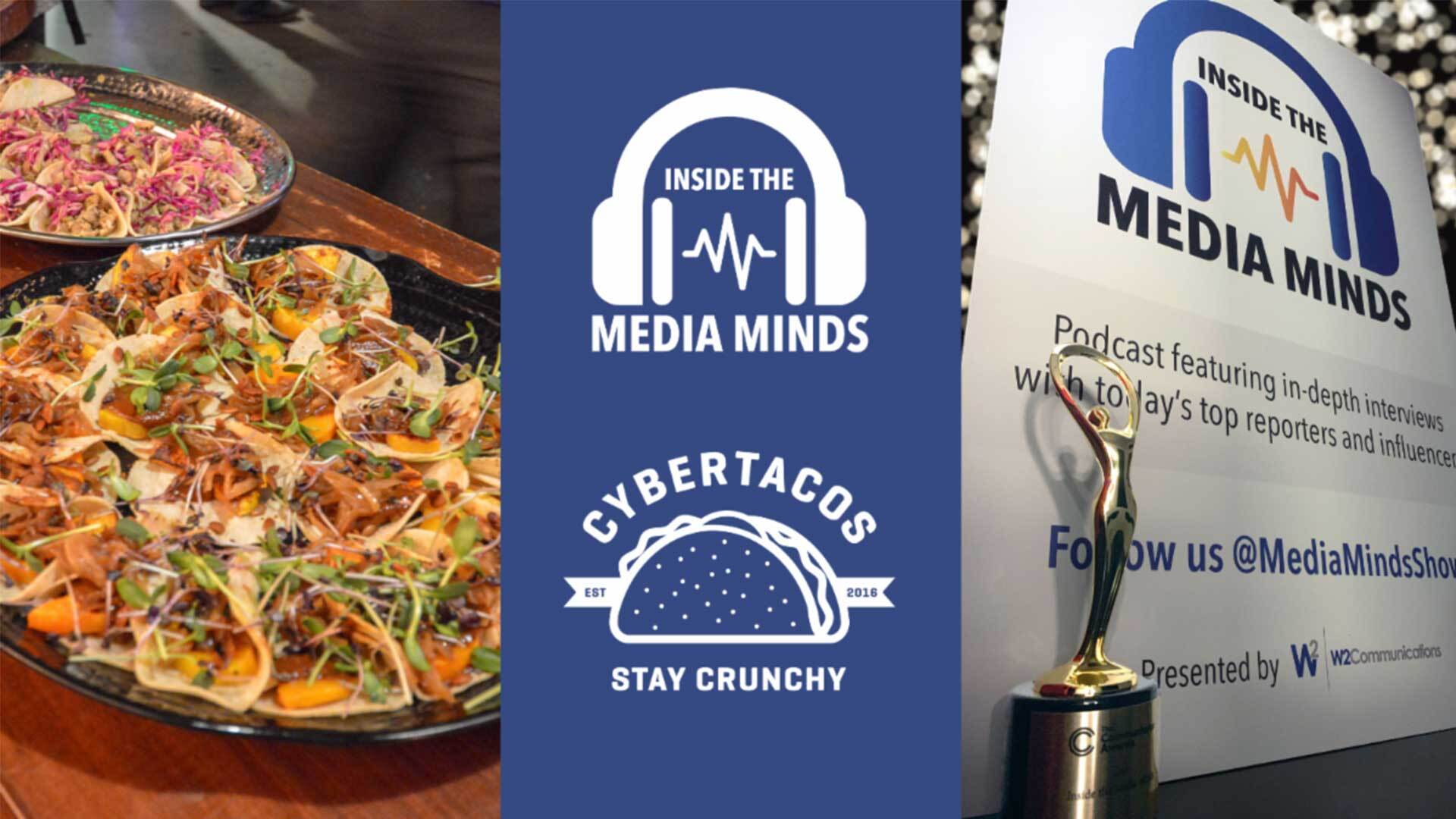
In the post COVID-19 world, cybersecurity journalists are – like the rest of us – adjusting to a time when there are fewer moments for face-to-face contact, and work-related phone calls/interviews are sometimes interrupted by a dog barking or doorbell ringing in the background. For these reporters, the news cycle is spinning more swiftly than ever, creating major challenges as they try to keep up in covering the latest developments about pandemic-driven attacks, ransomware incidents and potential voting threats, among other topics.
Yet, throughout it all, the face of cybersecurity has never seemed more human. And this has brought a new sense of purpose – and urgency – to their stories and professional engagements.
We explored these and additional themes in-depth during U.S. CyberWeek 2020, as CYBERTACOS and the Inside the Media Minds podcast teamed up to present the “Virtual CYBERTACOS Media Roundtable: Cybersecurity During the Pandemic.” With Inside the Media Minds host and W2 Communications Vice President Christine Blake leading the roundtable discussion, the following top journalists talked about the impact of the coronavirus on their day-to-day coverage:
- Shannon Vavra, Cybersecurity Reporter, CyberScoop
- Megan Gates, Senior Editor, Security Management
- Joe Uchill, Senior Reporter, SC Media
- Naomi Eide, Senior Editor, CIO Dive and Cybersecurity Dive
Here are some of the insights that our panel shared about how the pandemic is changing cybersecurity news reporting – perhaps for good:
The outbreak has redefined the playbook for cyber journalists’ professional – and personal – lives. From attacks on hospitals to alleged nation-state schemes to the upcoming U.S. election, the news cycle moves so rapidly that attempting to cover everything amounts to “drinking water from a firehose,” as panelists described it. In addition, reporters are conducting interviews from home, attempting to block out distractions created by children, pets and Amazon Prime deliveries. But what’s missing (and greatly missed) are those moments of face-to-face contact to develop genuinely close and productive relationships with sources.
“So much of what makes for good journalism comes from what practitioners will call ‘hallway-con,’ – people hanging out outside of a conference room, just talking to each other,” Uchill said. “This idle chatter makes for good ideas in journalism. We’re losing a lot of human contact. That’s where the humanity of stories comes from.”
COVID-19 is a factor in nearly every story. But it’s not always the factor. Yes, the coronavirus has driven the dramatic rise in work-from-home (WFH) professionals, to cite one example, and these arrangements create new opportunities for hackers. It also often plays a role in stories about the election, business operations and other key topics. But reporters can’t let the outbreak dominate every story. “We know that most articles will mention the pandemic in some way because it is the new lens,” Eide said. “But it no longer has to be your hook. Your hook should be a technology or cybersecurity initiative.”
Publications must be more transparent than ever in the age of disinformation. Even before the virus, reporters dealt with sentiments of distrust from a large segment of the public. So it’s essential for them to step out from “behind the curtain” and explain what they’re doing – and why. “We need to explain how we put these stories together and how we decide what should be included and what shouldn’t,” Gates said. “You’re not going to make everyone happy. But, ideally, you can have a conversation in which people understand that what you wrote was factual.”
When pitching, tried-and-true methods still hold up. Regardless of today’s extraordinary circumstances, PR pros must not forget about the fundamentals in pitching stories: Know the publication you’re pitching to, as well as its audience. Drop fear-stirring “doomsday” summaries. And, please, keep jargon to a minimum. “We’re sifting through so many pitches,” Vavra said. “Many don’t fit into our beats, especially if it’s all just marketing jargon.”
Note to readers: Direct quotes from our participating journalists were lightly edited in the interest of clarity and conciseness. To listen to our roundtable in its entirety, click here.




